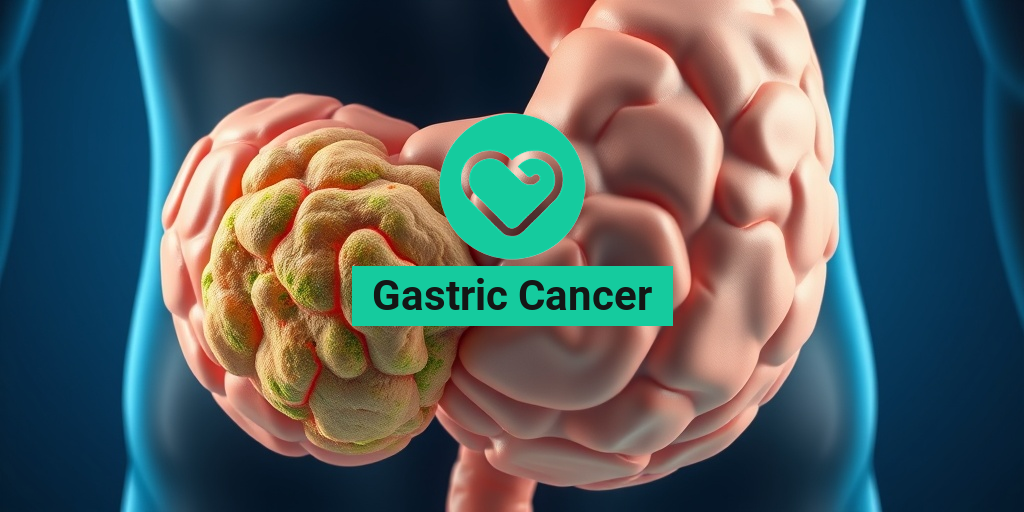What Is Williams Syndrome?
Williams Syndrome is a rare genetic disorder caused by the deletion of a small segment of chromosome 7. This condition affects approximately 1 in 7,500 births, making it relatively uncommon. Individuals with Williams Syndrome often exhibit a unique combination of physical, cognitive, and behavioral characteristics that set them apart from others. The syndrome is named after Dr. J.C.P. Williams, who first described the condition in 1961.
One of the most fascinating aspects of Williams Syndrome is the way it influences personality. People with this condition are often described as being exceptionally friendly and sociable, displaying a strong affinity for music and a love for social interaction. This characteristic can lead to a vibrant and engaging personality, making individuals with Williams Syndrome particularly endearing to those around them.
The Genetic Basis of Williams Syndrome
Williams Syndrome is caused by a deletion of about 26 to 28 genes on chromosome 7, which includes the ELN gene responsible for producing elastin, a protein that helps maintain the elasticity of blood vessels and other tissues. This genetic alteration can lead to various health issues, particularly cardiovascular problems, which are common in individuals with the syndrome.
Who Is Affected by Williams Syndrome?
Williams Syndrome affects individuals of all races and ethnicities. While it is a genetic condition, it is not inherited in a traditional sense; rather, it typically occurs as a random event during the formation of reproductive cells or in early fetal development. As a result, most families will not have a history of the syndrome.
Williams Syndrome Symptoms
The symptoms of Williams Syndrome can vary widely from person to person, but they generally fall into several categories: physical features, cognitive abilities, and behavioral traits.
Physical Features
Individuals with Williams Syndrome often exhibit distinct physical characteristics, including:
- Facial Features: A broad forehead, short nose, full cheeks, and a wide mouth with full lips are common.
- Eyes: Many individuals have a unique appearance of their eyes, often described as “starry” or “sparkling,” which can be attributed to the condition.
- Height and Weight: Children with Williams Syndrome may be smaller in stature and have a lower body weight compared to their peers.
Cognitive Abilities
While individuals with Williams Syndrome often have mild to moderate intellectual disabilities, they typically possess strong verbal skills and a remarkable ability to learn through music and social interaction. Some common cognitive traits include:
- Strong Verbal Skills: Many individuals excel in language and communication, often displaying a rich vocabulary.
- Learning Challenges: Difficulties with spatial awareness and problem-solving are common, which can affect academic performance.
Behavioral Traits
Behaviorally, individuals with Williams Syndrome are often characterized by:
- Friendliness: They tend to be extremely sociable and enjoy interacting with others, often approaching strangers with enthusiasm.
- Musicality: A strong affinity for music is frequently observed, with many individuals showing talent in musical activities.
- High Anxiety Levels: Some may experience anxiety, particularly in unfamiliar situations or environments.
Williams Syndrome vs. Autism
It’s important to note that while there may be some overlapping traits between Williams Syndrome and autism, they are distinct conditions. Individuals with Williams Syndrome typically exhibit a strong desire for social interaction, whereas those with autism may struggle with social communication. Understanding these differences can help in providing appropriate support and resources for individuals with either condition.
If you or someone you know is affected by Williams Syndrome, resources like Yesil Health AI (yesilhealth.com) can provide valuable, evidence-based health answers to help navigate the complexities of this condition.
In conclusion, Williams Syndrome is a multifaceted genetic disorder that presents a unique set of challenges and strengths. By understanding its symptoms and characteristics, we can foster a more inclusive environment for individuals with this condition, celebrating their unique contributions to society. 🌟

Williams Syndrome Causes
Williams Syndrome is a rare genetic disorder that arises from a deletion of genetic material on chromosome 7. This condition affects approximately 1 in 7,500 births and is characterized by a unique combination of physical, cognitive, and behavioral traits. Understanding the causes of Williams Syndrome is crucial for parents, caregivers, and healthcare professionals.
The Genetic Basis
The primary cause of Williams Syndrome is a deletion of about 26 to 28 genes on the long arm of chromosome 7. This deletion occurs spontaneously during the formation of reproductive cells or in early fetal development. The exact reason why this deletion happens is not fully understood, but it is not inherited from parents in most cases. Instead, it typically occurs as a random event.
Risk Factors
While Williams Syndrome is primarily a genetic condition, certain factors may influence its occurrence:
- Parental Age: Some studies suggest that advanced parental age may slightly increase the risk of chromosomal abnormalities, although this is not a definitive cause.
- Family History: In rare cases, a family history of genetic disorders may play a role, but most cases of Williams Syndrome are not inherited.
Associated Features
Individuals with Williams Syndrome often exhibit distinctive physical features, including:
- Facial Characteristics: A broad forehead, short nose, full cheeks, and a wide mouth with full lips.
- Cardiovascular Issues: Many individuals have heart defects, particularly involving the aorta.
- Growth Patterns: Children with Williams Syndrome may experience growth delays and have a smaller stature compared to their peers.
Understanding these causes and associated features can help in early identification and intervention, which are crucial for improving the quality of life for those affected by Williams Syndrome. 🌟
Williams Syndrome Diagnosis
Diagnosing Williams Syndrome can be a complex process, often requiring a combination of clinical evaluation and genetic testing. Early diagnosis is essential for effective management and support.
Clinical Evaluation
The diagnosis of Williams Syndrome typically begins with a thorough clinical evaluation. Healthcare providers look for characteristic features and symptoms, which may include:
- Distinctive Facial Features: As mentioned earlier, individuals may have unique facial characteristics that can prompt further investigation.
- Developmental Delays: Many children with Williams Syndrome experience delays in speech and motor skills.
- Behavioral Traits: Individuals often exhibit a friendly and outgoing personality, which can be a hallmark of the syndrome.
Genetic Testing
If Williams Syndrome is suspected based on clinical features, genetic testing is the definitive method for diagnosis. This testing typically involves:
- Fluorescence In Situ Hybridization (FISH): This test can identify the deletion of genes on chromosome 7.
- Chromosomal Microarray Analysis: This more advanced test can detect smaller deletions and duplications in the genome.
Genetic counseling is often recommended for families, as it provides valuable information about the condition, its implications, and potential recurrence risks in future pregnancies.
Importance of Early Diagnosis
Early diagnosis of Williams Syndrome is crucial for several reasons:
- Intervention and Support: Early intervention programs can significantly improve developmental outcomes, helping children reach their full potential.
- Medical Management: Identifying associated health issues, such as cardiovascular problems, allows for timely medical care.
- Educational Planning: Understanding the unique learning needs of children with Williams Syndrome can help in creating effective educational strategies.
In conclusion, recognizing the causes and understanding the diagnostic process for Williams Syndrome can empower families and healthcare providers to offer the best support and care for individuals affected by this condition. 🧠💖

Williams Syndrome Treatment Options
Williams Syndrome is a rare genetic disorder that affects approximately 1 in 7,500 births. Characterized by a unique combination of physical, cognitive, and behavioral traits, individuals with Williams Syndrome often require a tailored approach to treatment. Understanding the available treatment options is crucial for improving the quality of life for those affected by this condition.
Medical Interventions
While there is no cure for Williams Syndrome, various medical interventions can help manage symptoms and associated health issues. Some common medical treatments include:
- Cardiovascular Care: Many individuals with Williams Syndrome have heart conditions, such as supravalvular aortic stenosis. Regular check-ups with a cardiologist are essential to monitor heart health and address any complications.
- Hormonal Treatments: Growth hormone therapy may be considered for children with growth deficiencies. This treatment can help achieve a more typical height and improve overall health.
- Vision and Hearing Support: Regular eye and hearing examinations are crucial, as individuals with Williams Syndrome may experience vision problems and hearing loss. Corrective lenses or hearing aids can significantly enhance quality of life.
Therapeutic Approaches
In addition to medical treatments, various therapeutic approaches can support individuals with Williams Syndrome:
- Speech and Language Therapy: Many individuals with Williams Syndrome experience delays in speech and language development. Speech therapy can help improve communication skills and social interactions.
- Occupational Therapy: This therapy focuses on enhancing daily living skills and promoting independence. Occupational therapists can work with individuals to develop strategies for managing everyday tasks.
- Physical Therapy: Physical therapy can help improve motor skills and coordination, which may be affected in individuals with Williams Syndrome.
Behavioral and Educational Support
Behavioral and educational support is vital for individuals with Williams Syndrome, particularly in school settings:
- Special Education Services: Many children with Williams Syndrome benefit from individualized education plans (IEPs) tailored to their unique learning needs.
- Behavioral Therapy: Behavioral interventions can help address social and emotional challenges, promoting positive behaviors and coping strategies.
Williams Syndrome Management
Effective management of Williams Syndrome involves a comprehensive approach that addresses the diverse needs of individuals affected by the condition. This includes ongoing medical care, therapeutic support, and community resources.
Regular Monitoring and Check-Ups
Regular health check-ups are essential for individuals with Williams Syndrome. These appointments allow healthcare providers to monitor growth, development, and any emerging health issues. Key areas to focus on include:
- Cardiovascular Health: Regular echocardiograms and consultations with a cardiologist are crucial for managing heart conditions.
- Developmental Milestones: Tracking developmental progress helps identify areas where additional support may be needed.
Family and Caregiver Support
Families and caregivers play a vital role in the management of Williams Syndrome. Support groups and resources can provide valuable information and emotional support. Consider the following:
- Williams Syndrome Association: This organization offers resources, networking opportunities, and information for families affected by Williams Syndrome.
- Local Support Groups: Connecting with other families can provide a sense of community and shared experiences.
Promoting Independence and Life Skills
Encouraging independence is a key aspect of managing Williams Syndrome. Teaching life skills can empower individuals to navigate daily challenges. Strategies include:
- Social Skills Training: Programs that focus on social interactions can help individuals build relationships and improve communication.
- Life Skills Education: Teaching practical skills, such as cooking, budgeting, and personal care, can enhance independence.
In conclusion, while Williams Syndrome presents unique challenges, a combination of medical care, therapeutic support, and community resources can significantly improve the quality of life for individuals affected by this condition. By understanding treatment options and management strategies, families can better support their loved ones on their journey. 🌈

Living with Williams Syndrome
Williams Syndrome is a rare genetic condition that affects approximately 1 in 7,500 births. It is characterized by a unique combination of physical, cognitive, and behavioral traits. Individuals with Williams Syndrome often exhibit a distinctive facial appearance, a friendly demeanor, and a strong affinity for music. Understanding what it means to live with this condition can help foster a supportive environment for those affected and their families.
Understanding the Symptoms
The symptoms of Williams Syndrome can vary widely among individuals, but some common characteristics include:
- Facial Features: Individuals often have a broad forehead, a short nose, full cheeks, and a wide mouth with full lips. These features can give them a distinctive appearance.
- Cardiovascular Issues: Many people with Williams Syndrome have heart problems, particularly narrowing of the aorta, which may require medical intervention.
- Cognitive Abilities: While individuals may have mild to moderate intellectual disabilities, they often excel in verbal skills and have a strong affinity for music and rhythm.
- Social Personality: People with Williams Syndrome are typically very social and friendly, often displaying a high level of empathy and a desire to connect with others.
Daily Life and Challenges
Living with Williams Syndrome can present unique challenges. Individuals may require special educational support and therapies to help them thrive. Here are some aspects of daily life that can be affected:
- Education: Tailored educational programs can help children with Williams Syndrome reach their full potential. Many benefit from individualized education plans (IEPs) that cater to their specific learning needs.
- Social Interactions: While their friendly nature often helps them make friends, individuals may struggle with social cues and understanding boundaries, which can lead to misunderstandings.
- Health Monitoring: Regular check-ups with healthcare providers are essential to monitor cardiovascular health and address any emerging issues.
Despite these challenges, many individuals with Williams Syndrome lead fulfilling lives, engaging in hobbies, forming relationships, and contributing to their communities. Their unique perspectives and talents can enrich the lives of those around them. 🌟
Support for Families and Caregivers
Caring for someone with Williams Syndrome can be both rewarding and challenging. Families and caregivers play a crucial role in providing support and advocacy for their loved ones. Here are some ways to find support and resources:
Connecting with Support Groups
Joining a support group can be incredibly beneficial for families. These groups provide a platform for sharing experiences, advice, and emotional support. Organizations such as the Williams Syndrome Association offer resources, community connections, and information on local support groups. Connecting with others who understand the journey can alleviate feelings of isolation and provide valuable insights.
Accessing Educational Resources
Many families find it helpful to access educational resources tailored to Williams Syndrome. This includes:
- Workshops and Seminars: Attending workshops can provide families with strategies for managing daily challenges and understanding the educational needs of their loved ones.
- Online Resources: Websites and forums dedicated to Williams Syndrome can offer a wealth of information on therapies, educational strategies, and personal stories from other families.
Seeking Professional Guidance
Engaging with professionals who specialize in Williams Syndrome can make a significant difference. This may include:
- Medical Professionals: Regular consultations with cardiologists, geneticists, and developmental specialists can help manage health concerns effectively.
- Therapists: Speech, occupational, and physical therapists can provide tailored interventions to support development and daily functioning.
Ultimately, the journey of living with and caring for someone with Williams Syndrome is filled with unique challenges and joys. By seeking support, accessing resources, and connecting with others, families can create a nurturing environment that fosters growth and happiness. 💖

Frequently Asked Questions about Williams Syndrome
What is Williams Syndrome?
Williams Syndrome is a rare genetic disorder caused by the deletion of genetic material from chromosome 7. This condition is characterized by a unique combination of physical, cognitive, and behavioral features.
What are the common symptoms of Williams Syndrome?
Individuals with Williams Syndrome often exhibit a range of symptoms, including:
- Distinctive facial features: Such as a broad forehead, full cheeks, and a wide mouth.
- Cardiovascular issues: Many individuals have heart problems, particularly involving the aorta.
- Developmental delays: These can affect speech, motor skills, and cognitive abilities.
- Social personality: People with Williams Syndrome are often described as friendly and sociable.
How does Williams Syndrome affect adults?
Adults with Williams Syndrome may face ongoing challenges related to their cognitive abilities and health issues. However, many lead fulfilling lives, often engaging in social activities and forming meaningful relationships.
Are there any famous people with Williams Syndrome?
While specific individuals may not be widely recognized, there are many inspiring stories of people with Williams Syndrome who have achieved personal success in various fields, showcasing their unique talents and abilities.
How does Williams Syndrome compare to autism?
Williams Syndrome and autism are distinct conditions. While both may involve social challenges, individuals with Williams Syndrome typically exhibit a more outgoing and friendly demeanor, whereas autism can present a wider range of social behaviors.
What are the eye-related features of Williams Syndrome?
People with Williams Syndrome often have unique eye characteristics, such as:
- Wide-set eyes: This can contribute to their distinctive facial appearance.
- Strabismus: A condition where the eyes do not properly align.
Where can I find support for Williams Syndrome?
There are various organizations and associations dedicated to supporting individuals with Williams Syndrome and their families. These groups often provide resources, information, and community connections.
Is there a specific association for Williams Syndrome in the UK?
Yes, there are organizations in the UK that focus on Williams Syndrome, offering resources, support, and advocacy for affected individuals and their families.




